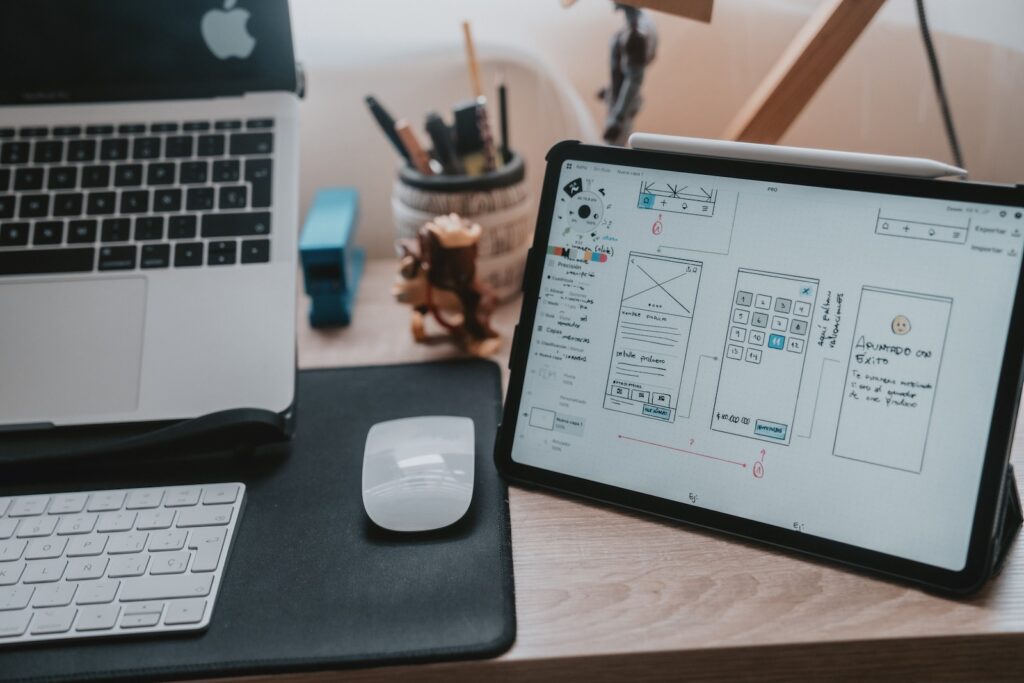In our fast-paced, technology-driven world, human-machine interaction (HMI) plays a pivotal role in shaping our experiences with digital devices and applications. From smartphones and websites to smart appliances and autonomous vehicles, the quality of HMI directly impacts user satisfaction, productivity, and even safety. This article explores the science behind UX/UI design in HMI, shedding light on the principles and practices that make our interactions with machines more intuitive, efficient, and enjoyable.
Understanding HMI
HMI, at its core, refers to the dynamic relationship between humans and machines. It encompasses the interfaces and interactions that bridge the gap between our cognitive abilities and the capabilities of machines. Understanding the historical context of HMI reveals a journey marked by significant advancements, from early computer terminals to the touchscreen revolution and beyond. Today, HMI extends beyond traditional screens to include voice commands, gestures, and even thought-controlled interfaces.
The Role of UX/UI Design
User Experience (UX) and User Interface (UI) design serve as the cornerstones of effective HMI. UX design focuses on creating a seamless, enjoyable, and efficient user journey, while UI design deals with the aesthetics and functionality of the interface itself. The synergy between UX and UI design is critical, as a visually appealing UI can be rendered useless without a thoughtful UX strategy.

The Science Behind UX/UI Design
The science of UX/UI design draws heavily from cognitive psychology. Designers study how humans perceive, process information, and make decisions. By understanding cognitive processes, designers can create interfaces that align with users’ mental models, making interactions more intuitive. User-centered design principles emphasize empathy for the user’s needs and preferences, driving the iterative design process. Usability testing and feedback loops are integral to refining HMI, ensuring it meets users’ expectations.
Creating a Seamless User Experience
Responsive design and adaptability are key considerations in HMI. With the proliferation of various devices and screen sizes, interfaces must be responsive to provide a consistent experience across platforms. Accessibility and inclusive design are also critical, ensuring that technology is usable by individuals of all abilities. Effective navigation and information architecture further enhance the user experience, reducing friction and frustration.
The Art of User Interface Design
UI design is a blend of aesthetics and functionality. Visual design principles, such as hierarchy, balance, and contrast, guide designers in creating visually pleasing interfaces. Typography and color psychology play pivotal roles in conveying information and eliciting emotions. Interactive elements, such as buttons, menus, and animations, are strategically placed to enhance user engagement and satisfaction.
Challenges and Innovations in HMI
The ethical dimension of HMI and UX/UI design is gaining prominence. Designers must consider issues like privacy, data security, and the potential for addiction when creating interfaces. Emerging technologies like Artificial Intelligence (AI), Augmented Reality (AR), and Virtual Reality (VR) are pushing the boundaries of HMI, offering exciting opportunities and challenges. As HMI continues to evolve, designers will need to adapt to new trends and possibilities.
Case Studies
Examining real-world examples of successful HMI and UX/UI design can provide valuable insights. For instance, the redesign of a mobile banking app that resulted in increased user engagement and fewer errors showcases the impact of user-centered design. Case studies also highlight the importance of continuous improvement and user feedback in the design process.
Conclusion
Human-Machine Interaction and UX/UI design are at the heart of modern technology. The science behind HMI, rooted in cognitive psychology and user-centered principles, empowers designers to create interfaces that enhance user experiences. As technology continues to advance, the importance of prioritizing user-centric design cannot be overstated. By embracing the principles outlined in this article, designers, developers, and businesses can ensure that HMI continues to evolve in ways that benefit and delight users.

